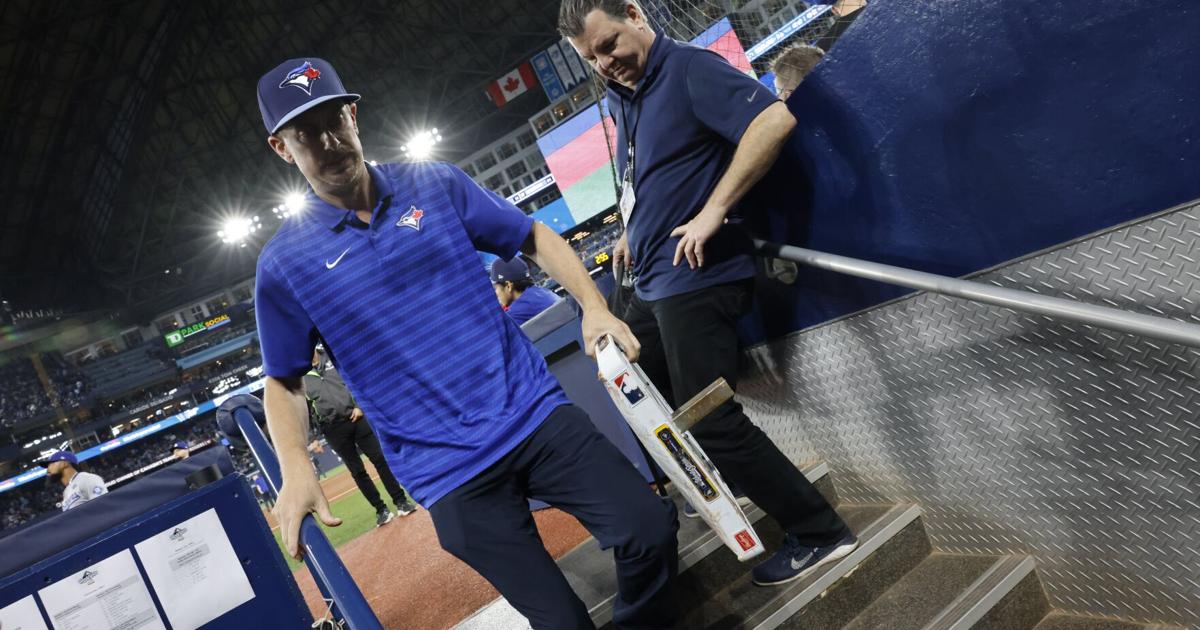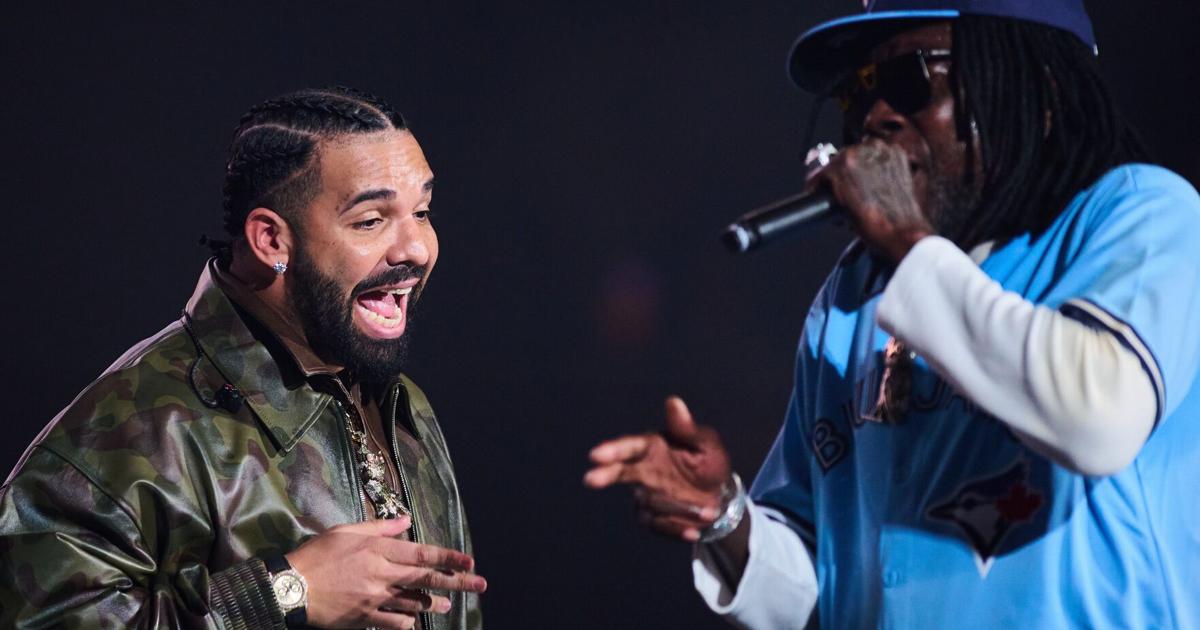At the end of the third inning, the grounds crew rushed onto the field and Michael Posner perked up.
“All right, here we go,” said Posner, a vice-president with Major League Baseball, who was at the Rogers Centre on Saturday night to oversee the collection of artifacts that would inevitably come out of the World Series.
His colleague, in an official-looking golf shirt, wedged his way out of a crowded camera bay near first base and positioned himself on the edge of the field.
The man, Steve Tracy, is in his 50s and from the serious way he carries himself, you can tell he was a cop. He spent 35 years with Toronto police and now works as an official MLB authenticator, part of a team of retired Toronto officers stationed around the ballpark to apply principles of evidence collection to baseball memorabilia.
The grounds crew finished their work and ran off, carrying rakes and dirty bases that had been swapped for fresh ones. Tracy stopped them, just for a second or two, so he could examine the bases as they exited the field. Then he followed the bases down some steps, into a tunnel beneath the stands.
“We have to witness exactly where it came from,” he said during Game 2 of the Blue Jays versus the Los Angeles Dodgers.
He stuck a tiny, tamper-proof hologram on the rubber part of each base and made notes.
Posner, the MLB executive who had travelled from New York for the Toronto games, watched Tracy work, still unsure what the night’s big-ticket item would be. His plan was to put at least a handful of game-used balls and other relics up on MLB’s auction site that night. But it was best if those items were somehow connected to the story of the game, and at that point, the story wasn’t clear.
“It’s early,” he said.
The night before, the story was the Blue Jays’ explosive nine-run sixth inning,
including a grand slam from pinch-hitter Addison Barger. Posner had already divvied up the available artifacts — an exercise in diplomacy, since the teams, the players, the league and the Hall of Fame all usually want a piece of a big moment. Barger’s cleats are eventually going to the Hall of Fame, and one of the bases was going to Topps in Texas, to be sliced up and pressed into a special-edition trading card, under the supervision of an MLB authenticator.
While authentication happens throughout the season, the league turbocharges its efforts for the World Series. In normal games, the Blue Jays usually have two authenticators. For the World Series, they have five, Posner said.
After the third inning, one of Posner’s lieutenants, Andrew Rinaldi, received a special request. Vladimir Guerrero Jr. had just broken a Jays record for hits in a single post-season. He wanted the ball. So after it was authenticated, Rinaldi put the ball in the pocket of his puffer vest, so he could deliver it later.
“In a win, we’ll probably hand it to him directly,” he said. “In a loss, we’ll have the equipment manager pull him aside and hand it to him, in a more discreet manner.”
By the seventh inning, Posner started to get a handle on what the story would be. With the Dodgers up 3-1, Yoshinobu Yamamoto was on the way to pitching his second consecutive complete game.
Posner’s team had an early strikeout ball thrown by Yamamoto, which was something of a rarity. Strikeout balls are hard for authenticators to get their hands on, since pitchers tend to keep throwing that ball, rather than switch it out.
“Go with the Yamamoto (strikeout) and the Will Smith RBI,” he told one of his colleagues, who rushed off to post the strikeout ball on the auction site, along with a ball that Smith, the Dodgers catcher, hit earlier to bring in a run. But he still didn’t have that one big item.
“We’re starting to see the story of the game here,” Posner said. “If the Jays come back, I still have room to put up some other stuff to tell that story.”
That comeback didn’t happen. Yamamoto pitched all nine innings to beat the Jays 5-1. When it was over, Posner walked out onto the field, knowing there would be demand for anything Yamamoto touched during the game.
The team set out three buckets at the pitcher’s mound for dirt collection, plus another five at home plate. (The league is running a presale on World Series dirt for $49.99 (U.S.) a bottle.)
To authenticate the dirt, retired Toronto police officer Ken Kinsman personally put the lid on the full bucket and duct-taped an X across the top, then wrapped more around the edges, and stuck holograms on the edges of the tape, like a wax seal on an envelope. Next, it was carted to a secret room at the stadium to await shipping to an MLB warehouse, where it would be funnelled into bottles.
Posner went to the pitcher’s mound looking for the rosin bags, which pitchers use to help their grip. The MLB’s senior director of e-commerce, Greg Novick, was also on the field, taking a photo of second base for the auction site.
He saw something on the slope of the mound and looked at Posner.
“Kick plate?” he asked, motioning at a spiky white square.
Posner paused for a moment. They hadn’t auctioned one of those in a long time.
“You’ve got Yamamoto rubbing his cleats on there,” Novick said.
“Bring it over to Kenny,” Posner told Novick. “We’ll see.”
Kinsman pressed a hologram on it and recorded it on his clipboard.
“It looks like it actually has some good use on it,” Posner said, looking at the reddish-brown stains on the kick plate. “Some nice dirt.”
It went live on the auction site with a note: “Used entire game.”
By Sunday evening, with more than a week left to go on the auction, the bidding was at $120.



